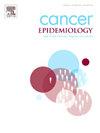Trends in head and neck cancer incidence in Ho Chi Minh City, Vietnam between 1996 and 2015
IF 2.4
3区 医学
Q3 ONCOLOGY
引用次数: 0
Abstract
Introduction
This study provides an analysis of head and neck cancer (HNC) cases over a 20-year period in Ho Chi Minh City, Vietnam. It aims to shed light on HNC's characteristics and trends in this highly populated urban region.
Methods
The analysis encompasses 8974 HNC cases, emphasising incidence rates, gender distribution, and the prevalence of different subtypes, including oral cavity, nasopharyngeal, oropharyngeal, and laryngeal/pharyngeal cancers. Ho Chi Minh City was chosen due to its extensive cancer reporting systems and its role as a major urban healthcare centre attracting a wide range of patients.
Results
The study reveals an increasing incidence of HNC in Ho Chi Minh City, with a notable predominance of male patients (73 %). The breakdown of HNC cases shows oral cavity cancer at 34 %, nasopharyngeal at 33 %, oropharyngeal at 12 %, and laryngeal/pharyngeal at 21 %. Compared to global averages, Vietnamese patients are diagnosed at an earlier age, with a noticeable trend of decreasing mean age of diagnosis over the study period.
Conclusion
This comprehensive study provides valuable insights into the HNC landscape in Ho Chi Minh City, revealing a slightly lower overall incidence but an earlier age of diagnosis compared to global trends. These findings suggest the need for region-specific public health initiatives and further research to clarify the epidemiological features of HNC in Vietnam.
1996 年至 2015 年越南胡志明市头颈癌发病率趋势。
导言:本研究对越南胡志明市 20 年间的头颈癌 (HNC) 病例进行了分析。研究旨在揭示这一人口高度密集的城市地区 HNC 的特点和趋势:分析包括 8974 例 HNC 病例,重点是发病率、性别分布和不同亚型的发病率,包括口腔癌、鼻咽癌、口咽癌和喉癌/咽癌。之所以选择胡志明市,是因为胡志明市拥有广泛的癌症报告系统,而且胡志明市是主要的城市医疗中心,吸引了众多患者:研究显示,胡志明市的 HNC 发病率呈上升趋势,男性患者明显占多数(73%)。HNC 病例的分类显示,口腔癌占 34%,鼻咽癌占 33%,口咽癌占 12%,喉/咽癌占 21%。与全球平均水平相比,越南患者确诊年龄较早,在研究期间,平均确诊年龄呈明显下降趋势:这项全面的研究为了解胡志明市的 HNC 状况提供了宝贵的信息,与全球趋势相比,胡志明市的总体发病率略低,但确诊年龄较早。这些发现表明,有必要采取针对特定地区的公共卫生措施并开展进一步研究,以明确越南 HNC 的流行病学特征。
本文章由计算机程序翻译,如有差异,请以英文原文为准。
求助全文
约1分钟内获得全文
求助全文
来源期刊

Cancer Epidemiology
医学-肿瘤学
CiteScore
4.50
自引率
3.80%
发文量
200
审稿时长
39 days
期刊介绍:
Cancer Epidemiology is dedicated to increasing understanding about cancer causes, prevention and control. The scope of the journal embraces all aspects of cancer epidemiology including:
• Descriptive epidemiology
• Studies of risk factors for disease initiation, development and prognosis
• Screening and early detection
• Prevention and control
• Methodological issues
The journal publishes original research articles (full length and short reports), systematic reviews and meta-analyses, editorials, commentaries and letters to the editor commenting on previously published research.
 求助内容:
求助内容: 应助结果提醒方式:
应助结果提醒方式:


